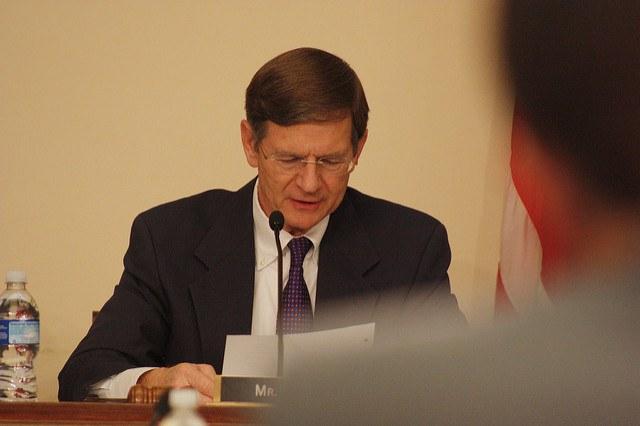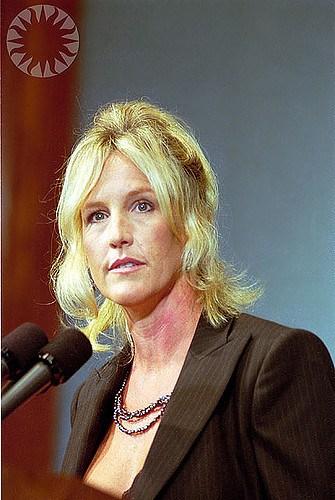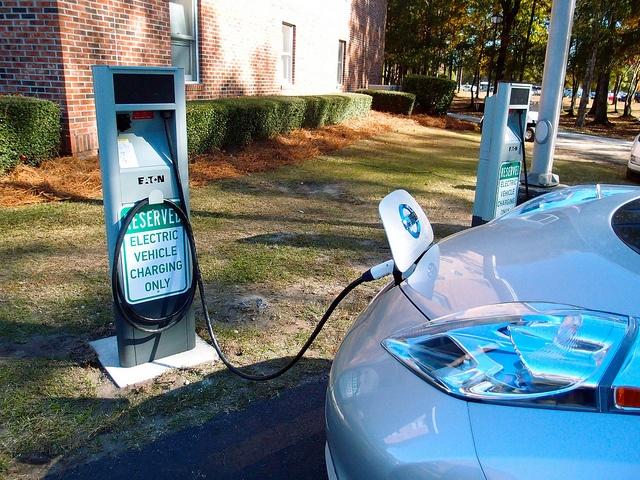Samsung to Sell High-end Refurbished Cell Phones


Wouldn't it be great to own a Galaxy S or Galaxy Note 7 with a much lower price tag and environmental impact? According to Reuters, Samsung is planning to launch a program that will refurbish premium smartphones, offering refurbished versions for a lower cost.
Worldwide smartphone sales have been fairly flat recently in Q2 2016 with vendors shipping 343 million smartphone, yet Samsung has gained some market share due to popular products like the Galaxy S7 and Galaxy S7 Edge. "We continue to see a number of changing dynamics in the smartphone market and many vendors are readjusting their business strategy and portfolio to take advantage of these market movements," said Ryan Reith, program vice president with IDC's Worldwide Quarterly Mobile Device Trackers.
For smartphone manufacturers to stay competitive in this market, innovative companies will have to either increase market share or boost profits. By offering refurbished cell phones, Samsung may be able to accomplish both and presumably maintain healthy margins in the process.
Selling the same cell phone twice seems like an ingenious way to increase profitability. Apple sells refurbished iPhones in many markets and the iPhone resells for approximately 69 percent of its original value after one year of use.
Most of the smartphones sold in Samsung's refurbished cell phone program will come from the one-year upgrade program, for people with the interest and means to own the latest devices. Although some of Samsung's recent smartphones have been very popular, they do come at a high price. The Galaxy Note 7 for example starts around $850, making it unattainable to many especially in emerging markets such as India where the average smartphone retails for under $90.Selling refurbished smartphones may be a way for Samsung to stay competitive even with lower-cost manufacturers using its flagship devices.
"Outside of Samsung's Galaxy S7 flagship, a majority of vendors, including Apple, have found success with more affordable models compared to their flagship handsets," said Anthony Scarsella, research manager for Mobile Phones. "As smartphone prices continue to drop and competition escalates at the high-end, vendors will need to continue to push 'flagship-type' devices at affordable price points to encourage upgrading on a more frequent basis." Offering refurbished phones seems like an easy way to achieve this.
Although manufacturers may wish to have shorter replacement cycles to boost sales of new devices with consumers frequently upgrading their smartphones, longer cycles are more sustainable. Manufacturing smartphones accounts for a significant amount of greenhouse gases, although operating them does as well. Smartphones can also avoid the need for other separate devices, such a mp3 players and cameras when users are upgrading from models with fewer features.
Refurbishing smartphones could be relatively inexpensive for Samsung. Refurbished phones will commonly come with a new battery or casing, yet they may open up new markets for its high-end products after one year of use. It might create a dip in sales for Samsung's mid-priced offerings, but it also gives consumers more attractive options overall.
Image credit: Kārlis Dambrāns, Flickr
Peter Thiel and Cliven Bundy Demonstrate the Hazards of Overreach


They say that pride goeth before a fall, and the rather interesting election cycle of 2016 brings up two cases in point: Silicon Valley tycoon Peter Thiel and the ersatz Nevada cattle rancher Cliven Bundy. To be clear, Bundy is currently behind bars facing federal felony charges while Thiel is enjoying the limelight as a prominent supporter of Republican nominee Donald Trump. However, there are some intriguing points in common between these two very different businessmen.
Cliven Bundy: the Libertarian connection
Cliven Bundy burst into the national media spotlight in 2014 when he called upon scores of of armed thugs and their supporters to stop federal agents from removing his untended "tresspass" cattle from public property in the environmentally sensitive Gold Butte area of Nevada.
As one can surmise from the Gold Butte episode, Bundy's primary point of intersection with modern Libertarianism is the idea that the federal government has no constitutional authority over lands outside of Washington, D.C.
That idea is also a main focus of lobbying activity by the powerful lobbying organization ALEC (the American Legislative Exchange Council), which welcomed Bundy as its grassroots voice.
Bundy's identificaiton with Libertarian philosophy -- and ALEC -- was further cemented at the beginning of this year when his sons, Ammon and Ryan, took their own crew of thugs into the Malheur National Wildlife Refuge in Oregon, with the ostensible aim of turning public property over to local miners, loggers and ranchers.
This is where things get interesting. If Libertarianism is to be understood as minimizing the role of government in private endeavors, then you're left with a situation in which powerful private individuals are free to run amok over the interests of other individuals.
Critics of contemporary Libertarianism have also linked the movement with fascistic tendencies, including a penchant for racism and a reliance on firepower and force. The Bundys illustrate both characteristics, including the use of armed threats.
In Oregon, the younger Bundys ran roughshod over the local community and ignored guidance from the democratically elected local sheriff. In Nevada, continued fallout from the elder Bundy's call to arms effectively shut down Native American cultural preservation efforts in Gold Butte, opening up the area to repeated acts of vandalism.
Ironically, Malheur was already emerging as a model of cooperation between federal control and local stakeholders. That could explain why the younger Bundys chose to travel out of state to make their point at Malheur, rather than focusing on efforts closer to their own communities.
Peter Thiel: the Libertarian connection
At first glance, Peter Thiel -- the self-identified Libertarian and Ivy League educated Silicon Valley A-lister who co-founded PayPal and is currently a Facebook board member -- has nothing in common with the Bundy family.
However, both share a hearty suspicion of American democracy along with the elevation of individual self-interest. Where the Bundys focused their efforts narrowly on land rights, Thiel has painted his philosophy with a much broader brush.
He outlined his thoughts in a 2009 essay in the journal Cato Unbound, under the headline "The Education of a Libertarian." First comes his analysis of the problem (emphasis added):
The 1920s were the last decade in American history during which one could be genuinely optimistic about politics. Since 1920, the vast increase in welfare beneficiaries and the extension of the franchise to women — two constituencies that are notoriously tough for libertarians — have rendered the notion of “capitalist democracy” into an oxymoron.
Seeing no way for Libertarianism to succeed politically in the U.S., Thiel proposes carving out new spaces for free enterprise. It's a technology-driven variation on the familiar "sovereign citizen" theme:
...the mode for escape must involve some sort of new and hitherto untried process that leads us to some undiscovered country; and for this reason I have focused my efforts on new technologies that may create a new space for freedom...
As Thiel tells it, cyberspace, the open sea, and outer space are three promising territories for the high tech sovereign citizen of the future to possess. He closes his essay with a paean to "seasteading" advocate Patri Friedman:
The fate of our world may depend on the effort of a single person who builds or propagates the machinery of freedom that makes the world safe for capitalism.
The over-reach, Peter Thiel edition...
Despite the incendiary put-down of American democracy, Thiel largely escaped the radar of the general public. In 2012 he briefly made news for providing the largest financial stake in the failed presidential candidacy of Libertarian (and documented racist) Ron Paul, an effort that also failed to gain much traction outside of the political junkie sphere.
However, this year is proving to be quite different, and Thiel's name is edging closer to becoming a household word.
That's not necessarily a good thing for Thiel.
This past May, Thiel was outed as the secret funder behind Hulk Hogan's successful "sex tapes" lawsuit, which resulted in the bankruptcy of Gawker Media.
That same month, Thiel's name popped up on the list of declared delegates for Donald Trump. By July, Thiel had maneuvered himself into a prime speaking role at the Republican National Convention.
Fast-forward to August, and Thiel has become a target of broad criticism for his successful attack on Gawker.
His continued support for Trump also links his name forever with a presidential candidate who has provided political observers with regular opportunities to record statements that reflect outright racism and nativism.
That, in turn, has turned up the volume on Thiel's association with white nationalism. In other words, Thiel has become an embarrassment to his business associates, especially Facebook.
How embarrassing? Well, when Jon Stewart jokes about you on a late-night show, you're dangerously close to crossing into the mainstream public radar. In a recent appearance on Larry Wilmore's last show, Stewart appears to have started a meme that links the Thiel name with vengeful suppression.
Musing on the reasoning behind Wilmore's cancellation, Stewart had this to say:
“Did you piss off Peter Thiel? Does revenge know no bounds?”
The hurt may not stop here. In a twist of coincidence (or not), last week Gawker Media was sold at auction to Univision. As a leading Spanish-language media platform, Univision is hardly sympathetic to the world view of Donald Trump and his supporters.
For that matter, it's a pretty safe bet to go with the not-a-coincidence option. The co-owner and chairman of Univision happens to be a fellow named Haim Saban. If that name doesn't ring a bell, Google up "Hillary Clinton top financial backer" and you'll find out.
Thiel thought the relatively tiny Gawker Media was worth swatting into extinction, but it looks like karma may be paying a house call soon.
...and Bundy edition.
As for the Bundy family, Ammon, Ryan and their main supporters were rounded up and jailed earlier this year, fortunately with just one loss of life. Cliven was later apprehended at an airport, where authorities could be assured that he would be unarmed and harmless.
In advance of a September 7 trial date for the Oregon episode, nine of 26 defendants have already plead guilty to various charges, and it is not a good look for Libertarianism:
Those charges include conspiracy to commit an offense against the United States, conspiracy to impede or injure a federal officer, using and carrying a firearm in relation to a crime of violence, assault on a federal officer, threatening a federal law enforcement officer, obstruction of the administration of justice, interference with interstate commerce by extortion, and interstate travel in aid of extortion.
Ouch!
Some of the defendants are also charged in the Nevada episode, so look for more details to spin out in the coming months.
Cliven Bundy initially garnered significant support in conservative circles for the 2014 standoff, but by the time his sons took over Malheur only a few outliers rallied to the cause. Even from jail, the Bundy's have continued to embarrass and alienate their former allies conservative circles.
Despite all the tough talk about states' right from elected leadership, evidently armed insurrection is not an actual thing.
Photo (cropped and altered): via Sportsfile Web Summit on flickr.com, creative commons license.
Congressional Climate Witch Hunt Reaches an Impasse


Lamar Smith (R-Texas), chair of the House Science Committee, has used his position to demand emails and documents from state attorneys general and environmental NGOs as a response to their investigation of ExxonMobil. New York Attorney General Eric Schneiderman and the Union of Concerned Scientists are amongst the parties involved. They allege ExxonMobil suppressed climate change science, researched by the company’s own staff scientists over 30 years ago and Rep Smith has requested email logs from the accusers.
NGOs including 350.org and Greenpeace have pushed back, claiming that Smith’s subpoenas amount to federal overreach and have an ulterior agenda of interfering with their researchers’ work. In the latest twist of events, 350.org’s outside counsel requested a meeting with the Science Committee last month to discuss the subpoena and issues related to climate change science. According to 350.org, however, the request to meet Smith and the committee has been denied.
According to attorney Abbe David Lowell, congressional committees, including Science, have required a full committee vote or at least the consent of the ranking member before issuing subpoenas. In Lamar’s investigation, however, this has not been the case. The ranking minority member of the committee, Eddie Bernice Johnson (D-Texas), has long been critical of Smith’s tactics, which NGOs describe as a fossil fuel-funded vendetta against environmental organizations.
Smith’s refusal to engage in any discussion with the 17 attorneys general investigating ExxonMobil, or any NGOs involved in this legal fight, comes in the wake of what scientists have said is the hottest month in recorded human history. NASA and the National Oceanic and Atmospheric Association (NOAA), both of which have been ensnared in Smith’s investigations, recently announced that the earth’s temperature in July was 1.57°F (0.87°C) above 20th century averages. According to NOAA, last month marks the 15th consecutive month that the world’s land and oceanic surface temperature was the highest in NOAA’s 137 years of temperature record keeping.
Some publications, including the Wall Street Journal, have accused the attorneys general and the likes of 350.org of obstinacy and say that Smith is entitled to any requested information per Congress’s legal mandate. Schneiderman and the parties on the other side of this dispute have framed the controversy as a states’ rights issue, which has turned the traditional Republican mantra of screaming against federal overreach on its head.
Meanwhile, 350.org has presented ExxonMobil’s conduct as akin to the tobacco industry’s past suppression of its products’ impact on human health. These accusations against ExxonMobil, which has led to the extended Rockefeller family to sell their stock in the company, have galvanized a group of NGOs to launch a site and social media campaign, #ExxonKnew. The coalition of 12 NGOs and publications are imploring the general public to become informed of the issue and hold the company accountable to what they say is more than three decades of climate change denial at the risk of public health and the long term viability of the planet.
Image credit: Ryan J. Reilly
5 Cost-Effective PR Strategies for Purpose-Driven Businesses


By Rebecca Cressman
The mission-driven business sector is growing – and so is the competition for ongoing press coverage.
And many of these companies are now left wondering, 'How do I keep my name in the news without spending the bulk of my (oftentimes very tight) budget on PR?'
As a PR & Communications Consultant and the founder of globesprouting, I’ve been asked this question more times than I can remember.
But as someone that’s also helped major global brands keep their name in the media – oftentimes without having any real ‘news’ to tell – I always have an answer. And it’s to employ some of the same winning strategies consumer brands already use to secure mainstream media traction and attract new customers.
As long as your business is willing to set aside the time and start thinking outside the ‘company mission story’ box, you can easily begin implementing smart, proactive PR strategies that don’t require expensive events and celebrity spokespeople – but still get results.
Following are my top five cost-effective PR strategies for purpose-driven businesses who want to increase their media coverage – but not their budget:
1. Downloadable media (press) kits
I’ve spoken with a number of mission-driven founders who weren’t aware of pieces of media coverage until after they came out.
And this doesn’t surprise me, especially with so many bloggers and influencers writing posts about their favorite businesses, oftentimes without getting in touch with the company or spokespeople directly. This brand of ‘citizen journalism’ isn’t going anywhere, so it’s probably a good idea to ensure that bloggers and influencers have everything they need to get your story right without talking to you first.
One of the best ways to encourage better – and more accurate – pieces of coverage is simply to make a downloadable media (press) kit available on your website. At a minimum, it should contain: high-res product/business founder images, FAQs/background information and recent media releases.
LuminAID has a great, downloadable press kit hosted on their website which you can check out here for inspiration.
2. Influencer send-outs
If your purpose-driven business sells a product, then you should definitely be sending it out directly to as many key influencers as possible.
And not just when you launch – but whenever one of them talks about your industry category in the news or on social media. And while I’m sure I don’t need to tell you to ensure you’ve got your Google Alerts and social media monitoring set-up to uncover who these key influencers are, just be sure you take advantage of the opportunity to engage with them directly throughout the year.
Products should at the very least be packaged ‘to perfection’ so that bloggers and social media influencers will want to photograph them. You should also include a personalized note – and if you can, create something totally bespoke just for them.
And if you don’t have actual products to send out, then consider a coupon code, content partnership or even conduct an interview for your website – all of which influencers can share across their social media channels.
3. Thought leadership
THINX is a great example of a mission-driven brand that stands for something much bigger than just their underwear products and social mission.
Their thought leadership on breaking female taboos has given THINX co-founder and CEO Miki Agrawal the opportunity to provide expert comment on a number of larger issues in the media.
Is there an important conversation about an issue your customers really care about that isn’t being had? Then this might be your opportunity to become a thought leader and advocate for change.
This type of strategy is also great for organically generating more content ideas across both owned and earned media channels, to ensure you’re not just selling products that help disadvantaged communities, but also providing expert advice to your loyal customers.
4. Ditching the media (press) release
Unless you’re launching something new, or making a big announcement, then spending money on creating and sending out press releases is probably a waste of time.
Instead invest that time and money into getting to know the media who write about your sectors – and work with them to develop stories for their readers.
5. Thinking proactively – and seasonally
Instead of relying on reactive opportunities, start thinking proactively about what type of content you can offer up to media on a monthly basis.
There’s probably plenty you can provide that doesn’t rely solely on your company’s mission statement and product offerings – like founder profiles, expert tips, case studies, personal essays and seasonal content that aligns with key calendar events like International Women’s Day.
The best way to do this is to create a PR (earned media) calendar (which ideally complements your owned content calendar) identifying key opportunities per media outlet – ensuring you’re offering something of value when it’s most relevant and timely.
Rebecca Cressman is a PR & Communications Consultant and the founder of globesprouting, a blog that tells inspiring startup stories and provides expert advice to help entrepreneurs launch and grow a purpose-driven business. Connect with her on Twitter @becmann
Companies and Investors Make Their 1,000th Commitment to Climate Change Action


Companies and investors have made 1,000 commitments to take action on climate change as part of the Take Action campaign by We Mean Business. There are 614 companies and investors participating in the campaign.
The company that made the 1,000th climate change commitment is Tech Mahindra, an India-based IT services company. The company, which has over 107,000 employees in 90 countries and annual revenues of $4 billion, recently committed to setting science-based climate targets. The commitment builds on the company’s past work. Since 2009, it has set internal carbon reduction targets. Its emissions tracking systems was recently awarded a 100 score out of 100 in the latest CDP Leadership Index.
The climate change initiatives We Mean Business encourages
There are a number of climate change initiatives that We Mean Business encourages companies to take action on, ranging from adopting science-based emissions targets to sourcing only renewable energy.Adopting a science-based emissions target
Companies like Tech Mahindra that make the commitment to adopt a science-based emissions target have two years to set their targets. Their commitments must be for five years from the date they announce their target. The target must cover company wide scope 1 and scope 2 emissions, as the Greenhouse Gas (GHG) Protocol Corporate Standard requires. An “ambitious” scope 3 target is also required if scope 3 emissions are a “significant’ part of the company’s overall emissions. Companies are required to annually disclose their emissions inventory.
We Mean Business provides a number of methodologies for companies to meet their emissions targets. One of those is the 3% Solution, which identifies how U.S. based companies can set emissions reduction targets leading to cost savings of $780 billion from 2010 to 2020. Developed by CDP, World Wildlife Fund, McKinsey & Company and Point380, the cost savings associated with the 3% Solution are achieved through increasing energy efficiency measures and transitioning to low carbon energy sources. Companies can use the Carbon Target Profit Calculator to calculate their targets.
Procure 100 percent electricity from renewable sources
Companies that make the commitment to only source renewable energy join RE100, a collaborative, global initiative of businesses committed to 100 percent renewable power. Since the private sector accounts for about half of the world’s electricity consumption, it makes perfect sense for companies to set goals to only source and use renewable energy. Switching to renewable energy benefits companies and the environment. Renewable energy helps companies manage fluctuating energy costs and helps them achieve carbon emission reduction goals.
IKEA is one of the companies that have committed to procuring 100 percent of its electricity from renewable sources. The global home furnishing company has 336 stores in 28 countries. It has committed to produce as much renewable energy as the total energy it uses in its buildings by 2020. So far, IKEA it has deployed about $169.86 billion into renewable energy projects, including owning and operating 327 wind turbines and installing nearly 700,000 solar panels on its stores and distribution center.
Putting a price on carbon
When companies make a commitment to put a price on their carbon emissions, they agree to align with the UN Global Compact’s Business Leadership Criteria on Carbon Pricing. They must set an internal carbon price high enough to materially affect investment decisions. They also must communicate on their progress over time in public corporate reports.
Responsible corporate engagement in climate policy
Companies who agree to engage in climate policy agree to do the following:
- Set up processes to internally audit all activities that their company takes part in to influence climate policy.
- Work to ensure that all of this activity is consistent.
- Communicate on actions and outcomes.
Companies who commit to reporting climate information in their mainstream corporate reports agree to do so using a framework like the Climate Disclosure Standards Board's (CDSB) Climate Change Reporting Framework. The CDSB is an international consortium of business and environmental non-governmental organizations (NGOs). The Framework helps a company filter out what is required to understand how climate change affects its financial performance. The information provided by using the Framework helps investors make informed decisions.
Remove commodity-driven deforestation from all supply chains by 2020
Deforestation is a big driver in climate change, accounting for about 15 percent of the world’s GHG emissions. Certain sectors really contribute to deforestation such as soy, palm oil, beef, leather, timber and pulp. Companies that commit to removing commodity-driven deforestation from their supply chains by 2020 can use CDP’s Deforestation Roadmap as their guide to setting and implementing targets and tracking progress.
Reduce short-lived climate pollutant emissions
Short-lived climate change pollutant (SLCP) emissions include methane, black carbon, tropospheric ozone or hydrofluorocarbons (HFCs). Reducing them has the potential to significantly contribute to climate change mitigation by 2050. Companies making the commitment to reduce them agree to:
- Include measurement and reporting of SLCP emissions into their GHG accounting.
- Reduce emissions of SLCPs.
- Engage stakeholders in their supply chain to reduce SLCP emissions.
- Promote best practices and showcase their successful efforts.
Companies can pledge to double their energy productivity through the EP100 platform with time-bound, quantified targets. EP100 is chaired by The Climate Group and operates as a companion to the RE100 program.
Photo: Flickr/Steven Jackson
3 Steps for Increasing the ROI on Your Corporate Wellness Program


By Jason Barbour
While most corporations have embraced wellness programs, many struggle to see a direct impact on the company’s bottom line. A recent Gallup poll determined that only 24 percent of employees provided with a corporate wellness program tend to participate. After corporate wellness programs like PepsiCo’s proved unlikely to save the employer funds, business leaders may be hesitant to enact programs of their own.
Done properly, these programs can truly benefit both employers and employees. Obese employees cost an average of more than $4,000 more per year in healthcare costs than those of average weight, and while health program incentives like screenings are great in theory, they don’t often come with effective preventive plans of action.
If you don’t take the time to formulate an effective corporate wellness program, not only do you risk spending more on unhealthy employees, but you also risk a significant drop in productivity. Seventy-seven percent of productivity loss is health-related, and it costs employers two to three times more than annual healthcare expenses. A company made up of 1,000 employees failing to operate at their full potential on a given day could be disastrous.
What’s hindering wellness programs?
The first main cause of ineffective wellness programs is a lack of appropriate spend. The average $50-$150 spent annually on employee wellness per employee is not nearly enough. When you consider the cost of health-related loss of productivity, combined with the 27 percent decrease in absenteeism and the 25 percent increase in performance for healthy employees, it’s surprising that companies don’t spend more on these programs. Furthermore, the money they do spend is usually allocated incorrectly.
The second factor holding back most wellness programs is the lack of onsite integration. Wellness can and should be ingrained in company culture. Employees spend as much time with their “work family” as they do with their actual families. Giving people the opportunity to exercise together on the clock or to sit down and share a healthy lunch increases the likelihood that they’ll continuously make these healthy choices.
Creating a program that works
In large cities where employees live far apart, it’s unlikely they will meet up after work to go to a gym. Screenings and pamphlets are ineffective. Luckily, there are ways to ensure you’re implementing a corporate wellness program with a real return on investment:
1. Integrate healthy living on-site Encouraging healthy camaraderie with an onsite company gym or prepared healthy meals works amazingly well — and there are options for similar offerings across a range of company budgets. Can’t afford to build an onsite gym? Bring in a trainer for an outdoor boot camp class. No money for catering healthy food? Work with a healthy meal delivery company to establish corporate discounts for your employees. And management participation in these health initiatives is imperative. Results are contagious — if you want employees to follow suit, you must lead by example and encourage people to participate.
2. Set your program up for success Picking strategies that will actually work is the surest way to get employees to participate. A return on investment won’t exist without participation, so management will need to do the research, have an open mind, and be willing to work a little harder to find solutions for its employees.
Hiring a corporate wellness manager with a proven record of success would be extremely beneficial to help you stay organized and be creative with your budget. It’s easy to buy 500 gym memberships, but getting 500 people to use them is more complicated. A corporate wellness manager can also help with creative onsite initiatives, like running groups or competitions, to increase participation.
3. Reward good results rather than penalize failure Health screenings, healthful eating, and exercising are, unfortunately, outside many people’s comfort zones. Couple that with a fine for failing to hit wellness goals, and you’re going to get major pushback. Try recognizing wellness program standouts in the company newsletter, or provide perks such as cash rewards or an extra paid day off. That sets a much better tone and only increases the likelihood of participation.
Rewarding employees really comes down to finding out what makes them “tick.” Poll them to determine what motivates them. While material incentives are nice, a sincere “good job” from management is even more important. Sharing the success of individuals and the program itself with employees on a regular basis creates buzz around the program and improves participation.
Although most corporations have wellness programs in place, they may not be realizing the full potential of a healthy workplace. With the right amount of spend and dedication, an effective corporate wellness program doesn’t have to be out of reach.
Jason Barbour is a highly sought-after strength and nutritional consultant for busy executives and has worked with professional athletes from the NFL, NHL, and UFC, including three world champions and an Olympic medalist. In 2009, Jason started Metabolic Meals, one of the country’s largest healthy meal delivery companies with thousands of customers nationwide.
Image credit: Alexandra Lehmann, Flickr
Surge in Demand for Avocados Fuels Deforestation in Mexico


Once spurned for having too many calories, avocados have spiked in popularity throughout the U.S. and Canada due to their reputation as a “healthy fat” that also doubles as a superfood. But the growing demand, which has led produce brokers and retailers to look beyond California to Mexico. According to an Associated Press investigation, the high prices that avocados can fetch for consumers has led to the deforestation of Mexico’s historic pine forests.
The AP’s Mike Stevenson interviewed representatives of NGOs and government agencies to gauge the avocado’s impact on the local landscape and communities. As in California, avocado trees in Mexico and other Latin American countries tend to thrive in the same microclimates also friendly to pine trees. And as consumers covet more avocados and are willing to pay more for them, growers in Mexico are culling pine tree groves and replacing them with trees growing the Hass variety, which are popular in North America for their texture and length of time at which they can keep in storage.
But the problems festering in Mexico are that avocado trees require almost twice as much water as the trees native to the region, and the unchecked use of agro chemicals are also putting local citizens’ health at risk. Many growers, in a chess move to evade local authorities, are at first planting avocado trees within the pine forests, eventually cutting the native trees in order to allow the new trees to score more sunlight.
Most of the deforestation is occurring in Michoacán, a state slightly smaller than West Virginia that stretches from central Mexico to the Pacific coast. Agriculture is one of the largest pillars of the state’s economy, with almost one-third of the population working within farming, forestry and fishing. The state’s ecology offers plenty of eco-tourism opportunities, with the annual arrival of as much as one billion Monarch butterflies from Canada making the journey to the state’s pine forests. That phenomenon, however, is at risk due to the illegal deforestation that is ongoing due to the continued demand for avocados.
And it is not just Canada and the U.S. fueling this demand. Estimates suggest that Mexico supplies 30 percent of the world’s avocados, with additional overseas markets including Europe and Asia.
Stevenson’s report suggests that local officials are taking this environmental threat more seriously, and the researchers he interviewed suggest deforestation is on the decline for now. But the links between avocados and deforestation have posed challenges elsewhere in Latin America. The decrease in the size of Chile’s forests have in part been caused by the increase in the country’s exports of avocados and has also threatened its water supplies. Limited arable land in Peru, which is also a major avocado exporter, has also led to deforestation. Meanwhile, consumers insist on having this food year round, instead of relegating their consumption to California’s growing season, which at its longest stretches from February to October.
Image credit: Greenpeace Mexico
UK food charities face real challenges in feeding the most vulnerable


Erin Brockovich, EWG Weigh In on North Carolina Coal Ash Debate


Duke Energy's battle to maintain control over how and when it closes its 14 North Carolina coal ash ponds has just met a new challenge. Environmental activist Erin Brockovich and the Environmental Working Group (EWG) are asking the Environmental Protection Agency (EPA) to lower the maximum level of hexavalent chromium [Cr(VI)] allowed in public drinking water. Cr-6 has been found in water sources adjacent to unlined coal ash ponds such as those maintained by the electric company in North Carolina.
Coal ash and hexavalent chromium
Kenneth Cook, president of the EWG and Brockovich, who is a consumer protection advocate for Weitz and Lutzenberg, PC in Los Angeles, released a letter last week calling on EPA administrator Gina McCarthy to “use [her] authority under the Safe Drinking Water Act” to revise the current standards for Cr(VI) contamination of drinking water. According to the EWG and Brockovich, "there is no federal enforceable health-protective standard" set by the federal government that states can rely upon to regulate Cr(VI) levels in potable water.
Brockovich is no stranger to the hexavalent chromium debate. Her research into Cr(VI) contamination of drinking water during the 1990s in California led to a $333 million award against Pacific Gas and Electric. Cr(VI) was found to have polluted local community water sources and the law firm where she was working as a law clerk at the time, Masry and Vititoe, was able to prove that Pacific Gas and Electric was responsible for the pollution.
Since that time, researchers at the National Institutes of Health have been able to confirm that consuming Cr(VI) can cause cancer. The EPA has reportedly been aware of the danger, but hasn’t taken steps to lower the maximum allowed limits in drinking water.
"We write with deep concern about this continued delay. It is clear that the delay is sowing confusion among state and local regulators, utilities and the public about how much hexavalent chromium is safe in drinking water," the EWG and Brockovich wrote. They said the lack of clarity in how much of the chemical is considered toxic is increasing the public's chance of exposure to the chemical, "which federal, state and independent scientists agree pose health hazards."
In July, North Carolina's legislature passed a new bill that gives Duke Energy more say into when and how coal ash ponds are cleaned up. Only four of the 14 coal ash sites are to be closed on a priority basis. Duke Energy at the same time, must supply drinking water until 2018 for those residents with wells affected by coal ash leaks. It is not clear whether that supply will also be available to farm stock and other domestic animals near the sites. Duke Energy says it plans to have all coal ash sites closed by 2029. Environmental groups are pushing to have the sites closed earlier.
Epidemiologist: State is misleading residents
But Brockovich and the EWG’s letter isn’t the only headache for Duke Energy these days. Last week the state’s head epidemiologist, Dr. Megan Davies resigned from her post with North Carolina’s Division of Public Health, stating that the state was deliberately misleading the public regarding the safety of well water that may have been exposed to seepage or leaks from Duke Energy’s coal ash ponds.
In her letter of resignation, Davies took issue with the state’s handling of testimony by Public Health officials in a recent court case. State toxicologist Kenneth Rudo, who worked under Davies, testified that he disagreed with the state’s decision to rescind “do not drink” orders issued to community members who get their water from wells near leaking coal ash ponds. In a widely publicized rebuttle the state health director took Rudo to task for “unprofessional approach to this important matter” and accused the toxicologist of “questionable and inconsistent conclusions” in his work. Rudo hired a lawyer, and both Davies filed her resignation, confirming that she had personally informed her superiors several times during 2015.
“The editorial signed by Randall Williams and Tom Reeder presents a false narrative of a lone scientist," Davies said, noting that upper management was regularly informed of recommended steps, because the department "followed a procedure that engaged DPH and DHHS leadership in all decisions."
The state has yet to issue a statement on Davies' resignation, but environmental organizations and North Carolina residents aren't waiting. Protesters armed with air horn guns and other audible instruments have taken up temporary residence near the state's executive mansion and are making their feelings known to the governor from outside his window. In addition to the festering coal ash controversy, the protesters are upset about the government's controversial law (HB2) regulating where LBGT individuals can use public facilities. The protesters have vowed to serenade the governors' residence every Wednesday until election day in November.
Image: Flickr/Public.Resource.org
Electric Car Charging-Station Companies Issue Warning Over VW Settlement


Volkswagen has been dealing with a series of unfortunate events lately, with European security researchers recently claiming that almost 100 million of the company's vehicles are vulnerable to a new hack that affects the keyless entry systems. But that's not even why the company is about to go down as one of the biggest "whoops" moments in auto manufacturing history. Volkswagen is close to wrapping up its settlement over the “dieselgate” scandal. To summarize, Volkswagen sold thousands of diesel-fueled cars claiming they low emissions, but they rigged the cars to intentionally trick emission tests. Not nice, VW.
When the dust settles on the settlement, VW could be on the hook for around $15 billion in fines, paybacks and other remunerations. It is those other remunerations that are coming under scrutiny.
Charging Station Infrastructure
At issue is the pledge for VW to invest in electric charging infrastructure. It seems like a justified punishment. VW caused pollution, and now VW is going to pay to support clean energy. Electric cars are gaining in popularity. Vehicles like the Prius and Leaf and making an impact on carbon footprints.
What hasn't caught up yet are electric charging station options. Obviously, you can plug your electric car into your home outlet once you get back from your daily travels. What happens if you get low on juice while driving? That is where the charging stations come into play.
There are charging stations popping up at airports, shopping malls and government buildings, but that's not enough. The VW investment could lead to an expansion with stations being built at large apartment complexes and bigger parking structures throughout the country. What could be the harm in that? It's a matter of trust.
Shady VW?
A concern has been raised by 28 companies that are already in the electric charging-station business. They fear that the big cash infusion VW is pouring into the project might give them an unfair advantage in deciding where these stations are going to be built and how they will be designed. Could it be Volkswagen might set up the stations to benefit its own electric cars? How could a company be so devious and unscrupulous? Oh, right. It already is.
The proposed solution is to appoint an administrator who will ensure everyone in the business gets a fair slice of the pie. With $1.2 billion earmarked for this expansion, it’s understandable these companies would want to be protected.
Additional Settlements
If you happen to be one of the owners of those polluting VWs, you might be wondering what good an electric charging station is going to do for your driving. Not much, actually. However, VW is attempting to make things right by cutting checks up to $20,000 for each car owner. That might help defer some of the costs of your initial investment in the diesel VW. The real problem is that in some states, like California, if you don't pass the emissions test, then you can't drive your car.
Just be thankful you don't live in Europe with a diesel VW. All those owners got for their troubles was a software update and a piece of plastic pipe. Why the difference? Lawyers. In Europe, it is much harder to sue a manufacturer in class-action lawsuits. Remember that the next time you hear a politician who wants to roll back lawsuit regulations. Would you rather have a check or a plastic tube?
Image credit: Myrtle Beach TheDigitel, Flickr